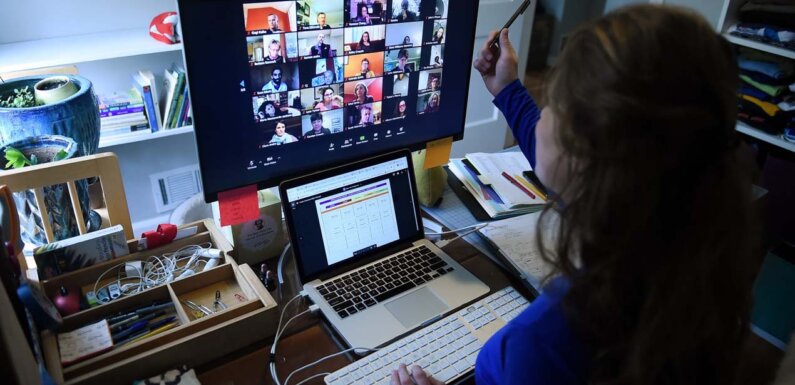
Today, technology has become an integral element of our lives, blurring the lines between the real life and the digital world. Just think for a second. How many devices do you have within arm’s reach while reading this article? At least a couple of them, right? But, if technology is so important to us, why do we leave it out of education.
That’s wrong.
IT solutions are growing at an astonishing pace, providing us a limitless amount of information, which is something people could only dream of in the past. Above all, they have revolutionized the face of modern education. The implementation of videos, presentations, smart boards, and messaging platforms has improved the way students learn and memorize data, as well as the way they communicate with their peers. Most importantly, it has made the teachers’ job much enjoyable and creative.
Let’s see how.
More Effective Assessment
Traditionally, the assessment was all about a teacher asking a question and a learner answering it. Even though this formula is still alive and kicking, the thing is that it has numerous drawbacks. For instance, the fact that a student gives you a definition of a particular term doesn’t mean that they understand it any better. This is exactly when new teaching tools shine. With them, the process of assessment has changed dramatically.
Namely, there are numerous benefits of technology-enhanced assessment. First, it eliminates the possibility of human error, meaning that it is impartial and far more accurate. Second, it is instant and time-saving. For teachers, this means saving time and focusing on more creative aspects of their job. Finally, it’s simpler. Students can take their tests from anywhere and at any time convenient, feel more relaxed while doing tests, and receive the real-time feedback.
A Personalized Learning Approach

Everyone working in the education sector knows that each student is like a snowflake. They have different personality traits, attitudes, and learning styles. To make sure that you’ve helped them get the most of the lecture, you need to implement a personalized learning approach.
With the help of sophisticated educational tools, this has never been simpler. Technology helps teachers adapt the pace of learning to the students’ needs. Most importantly, it gives them the opportunity to introduce activities meaningful to their learners, driven by their interests. For instance, visual learners can use presentations, graphs, and videos to remember the material better, while the gamification of the learning process may be an ideal solution for those with a short attention span.
Helping Students with Disabilities
Statistics show that the number of the U.S. students with special needs has grown 30% over the past 10 years. Moreover, the same study tells us that almost every classroom in the country includes a student with disabilities. So, what do these facts tell us?
To give students with special needs the opportunity to learn alongside their classroom peers, teachers need to tailor their programs to these students’ needs. Fortunately, the number of assistive tools on the market has risen rapidly. Let’s see some of them:
- Text-to-speech software helps learners with blindness, dyslexia or any other type of visual impairment and learning disability that affects their ability to read.
- Assistive listening systems help learners with hearing problems.
- Sip-and-puff systems are used by students who have mobility challenges.
- Math tools help students that have a trouble with doing math.
Improved Teacher-Student Communication
Today, we have transferred almost all aspects of our daily lives to the cloud, from paying bills to managing our private and personal obligations. The same goes for education. Teachers can use ClassDojo and Remind to communicate with students and their parents, Edmodo and Moodle for giving student feedback, and Slack and Schoology for collaborating on school projects. Not to mention some basic cloud storage platforms, like Dropbox that allow you to upload and share massive data with a wide range of students and colleagues. With the help of these awesome apps, your learners will be able to communicate in real-time, upload their projects and assignments instantly, and access important materials, regardless of their location.
Visualized Learning Materials

With the rise of technology, photographs, models, and maps are losing their popularity. Today, teachers can use a wide range of technologies to explain practically any concept. Most importantly, being able to visualize everything that is discussed, students can easily understand and memorize massive information easily. For example, Chromecast iPhone mirroring is very easy with an app and it can help teachers present visuals easily.
One of the most common and affordable ways to visualize your learning materials is PowerPoint presentations, which have already dominated the education landscape. For example, in Australia, the number of tech startups offering presentation skills training in Sydney and building online platforms for creating PowerPoint-like presentations is constantly rising.
PowerPoint gives you the opportunity to create interactive presentations, comprising text, audio, and video elements. Most importantly, as it is super-easy to use, teachers can inspire learners to create their own PowerPoint presentations on various topics and present them in front of their peers. These activities not only help them use technology for the right purposes, but also give them the opportunity to express their creativity and practice oral presentation skills.
Back to You
Technology helps us move from the traditional, repetitive learning methods to the interactive, creative, and more engaging approaches. Only by implementing IT solutions, teachers will be able to organize their lectures more effectively, save both time and money, engage their students, and build better communication with them.

